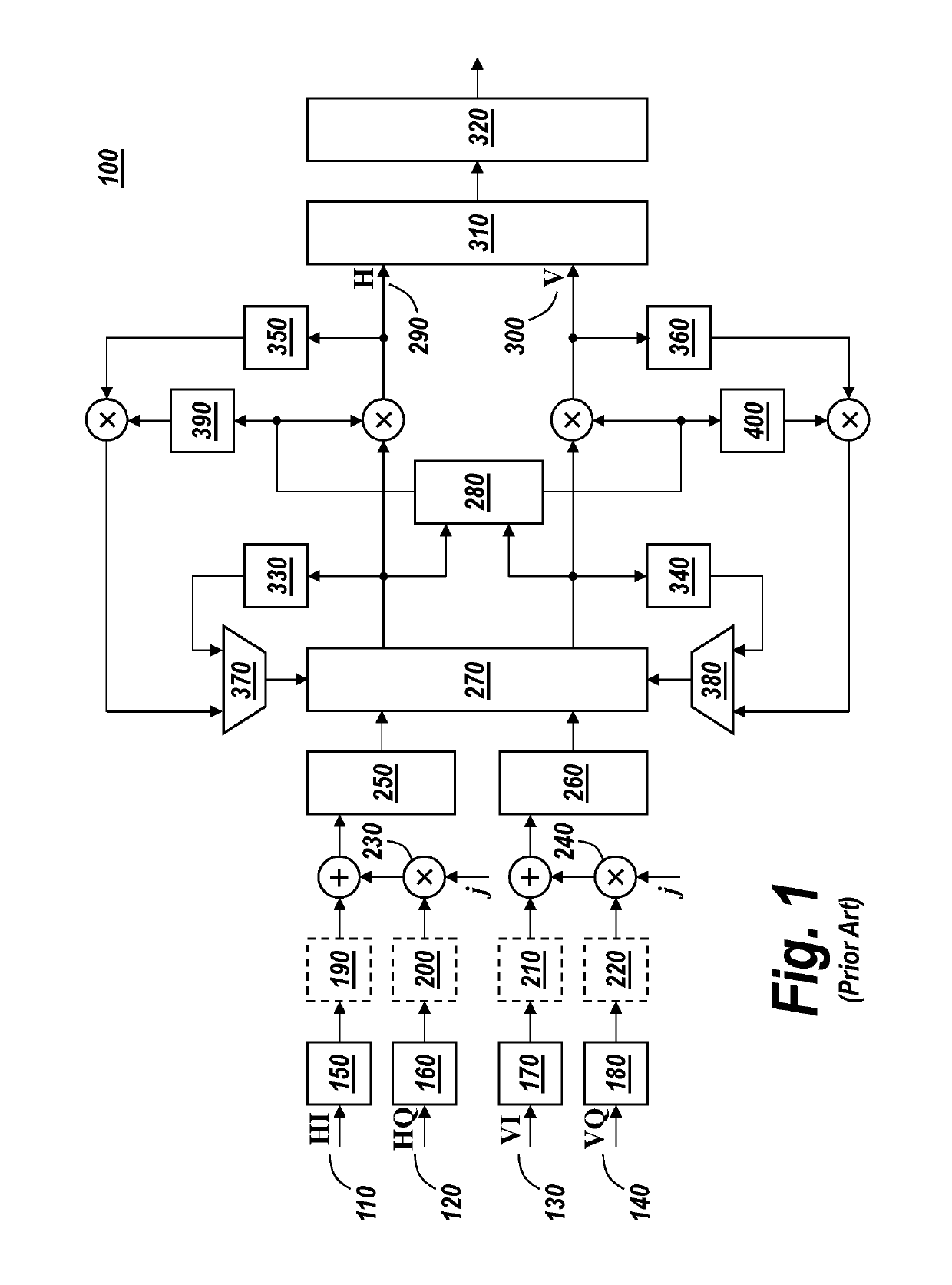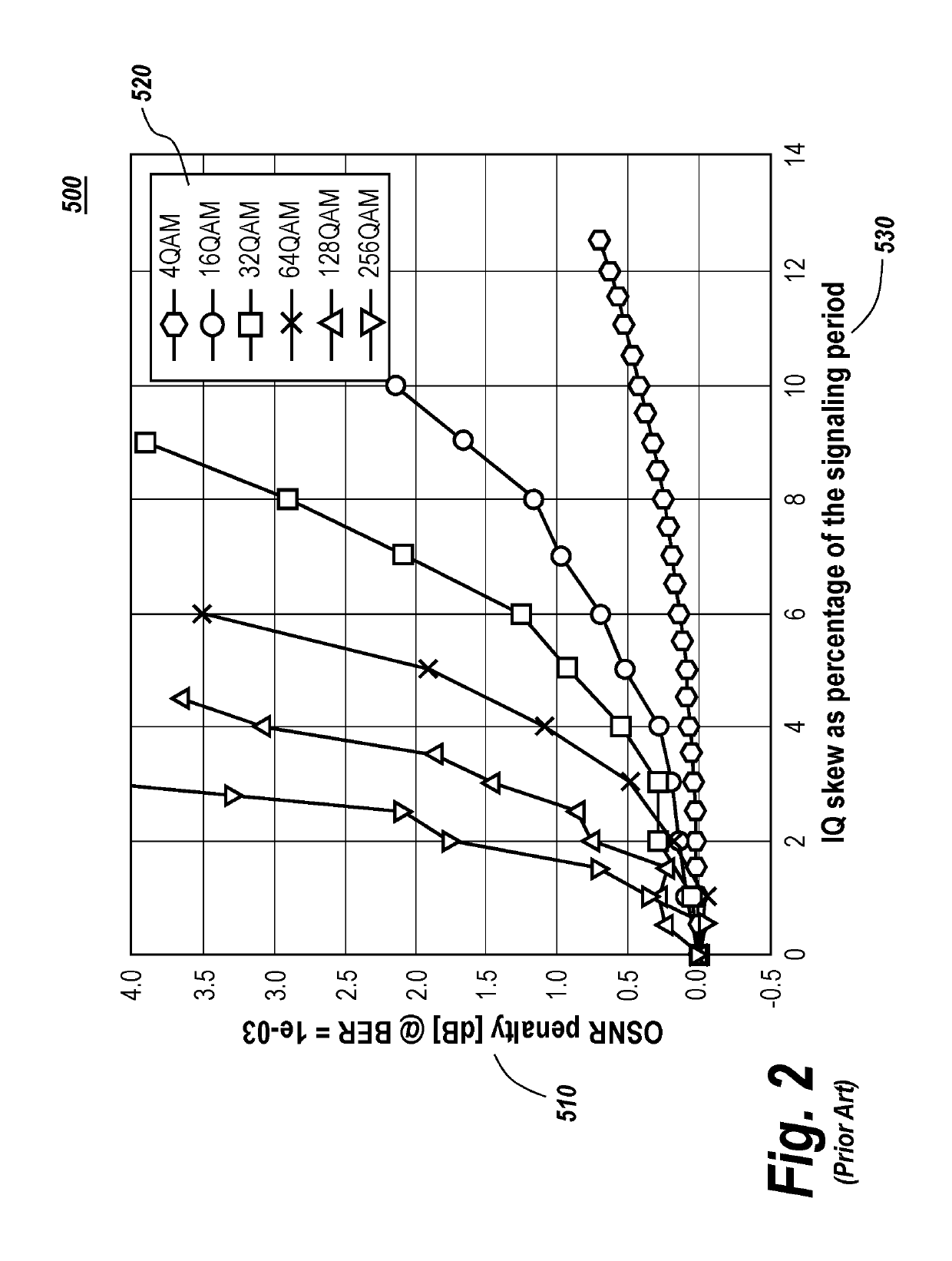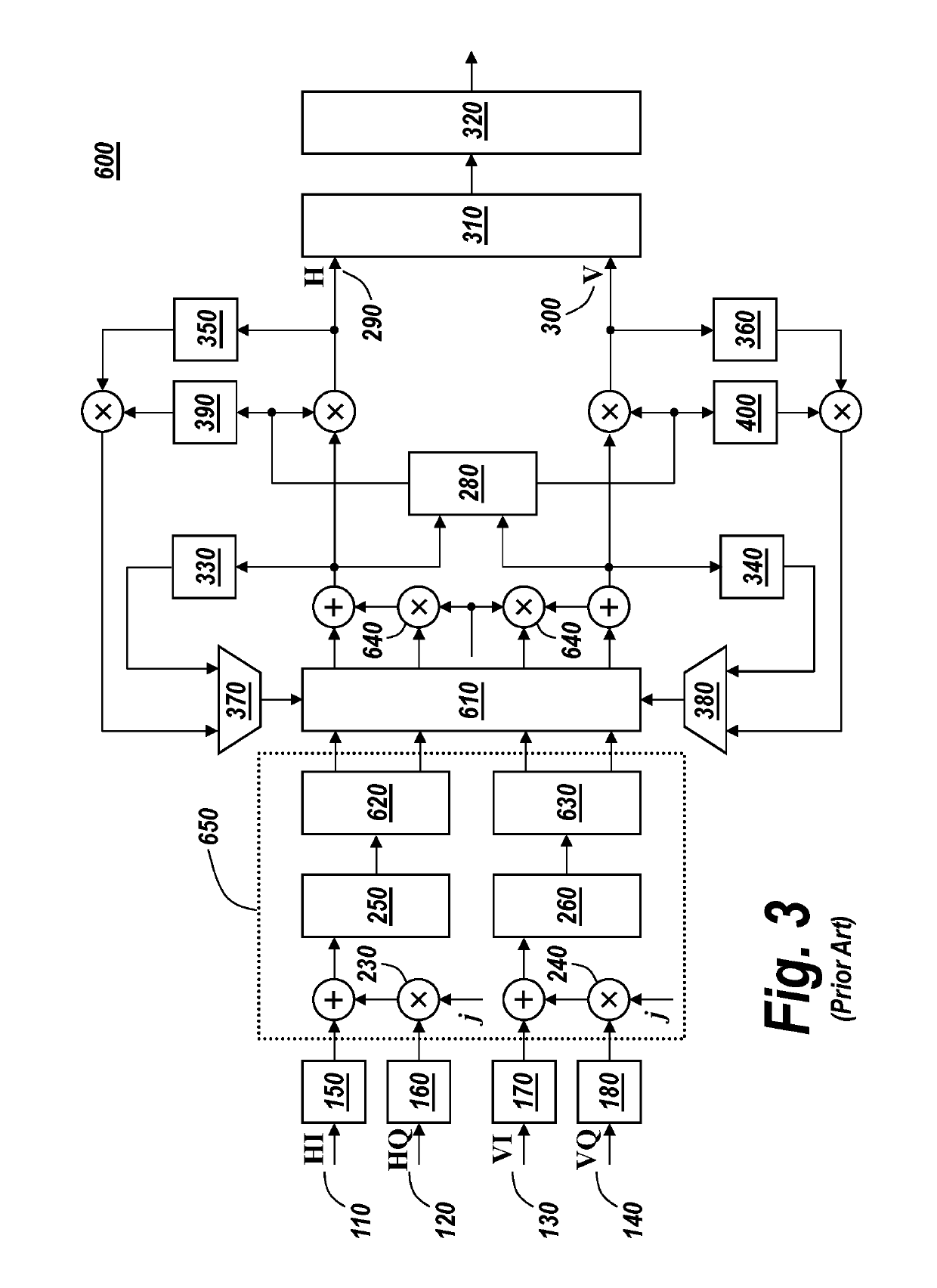Signal processing in an optical receiver
a technology of optical receiver and signal processing, applied in the direction of radio transmission, electrical apparatus, transmission, etc., can solve the problems of increasing the cost of precision dependent analog circuitry design, exacerbate the problem, severe degrade the performance of the receiver when using high-order modulation formats, etc., and achieve the effect of no practical effect on the performance of the adaptation loop
- Summary
- Abstract
- Description
- Claims
- Application Information
AI Technical Summary
Benefits of technology
Problems solved by technology
Method used
Image
Examples
Embodiment Construction
[0051]For the purposes of promoting an understanding of the principles of the invention, reference will now be made to the preferred embodiments illustrated in the drawings and specific language will be used to describe the same. It will nevertheless be understood that no limitation of the scope of the invention is thereby intended, such alterations and further modifications in the illustrated devices and method and such further applications of the principles of the invention as illustrated therein being contemplated therein as would normally occur now or in the future to one skilled in the art to which the invention relates.
[0052]FIGS. 1 to 4 provide background information and illustrate examples of digital signal processing devices according to the state-of-the-art; see discussion above.
[0053]FIG. 5 illustrates a digital signal processing device 800 according to an embodiment of the present invention. In this embodiment, the analog-to-digital converters 150, 160, 170, 180 convert ...
PUM
 Login to View More
Login to View More Abstract
Description
Claims
Application Information
 Login to View More
Login to View More - R&D
- Intellectual Property
- Life Sciences
- Materials
- Tech Scout
- Unparalleled Data Quality
- Higher Quality Content
- 60% Fewer Hallucinations
Browse by: Latest US Patents, China's latest patents, Technical Efficacy Thesaurus, Application Domain, Technology Topic, Popular Technical Reports.
© 2025 PatSnap. All rights reserved.Legal|Privacy policy|Modern Slavery Act Transparency Statement|Sitemap|About US| Contact US: help@patsnap.com



